Overview
This article dives into ten smart strategies for using AI price optimization to boost success in manufacturing. It highlights how important data analytics, understanding consumer behavior, and evaluating the competition can be. By embracing these strategies, manufacturers can not only increase their profits but also adapt to market shifts and build lasting customer loyalty. Just look at the impressive profit jumps reported by companies that have adopted AI-driven pricing models—it's pretty clear that this approach works!
Introduction
In today’s competitive manufacturing landscape, the ability to adapt pricing strategies quickly can truly make or break a business. Did you know that over 70% of producers are planning to implement AI solutions soon? This means the opportunity to leverage advanced technologies like AI price optimization is more critical than ever. Yet, as manufacturers embark on this transformative journey, they often encounter the challenge of effectively integrating these strategies into their existing frameworks.
So, how can they harness the power of AI not just to optimize prices but also to boost profitability and customer satisfaction in a rapidly evolving market? Let's explore this together!
GenAlpha Technologies: Leveraging AI for Price Optimization in Manufacturing
Have you ever wondered how manufacturers stay competitive in a fast-paced market? GenAlpha Technologies is leading the way in AI price optimization, making waves in the manufacturing sector. With their and robust data analysis, they empower producers to set prices that align perfectly with market trends and consumer behaviors.
Their flagship product, Equip360, seamlessly integrates with existing ERP systems, allowing for real-time cost adjustments that boost profitability and enhance customer satisfaction. This strategic approach not only streamlines cost management but also gives producers the agility to adapt quickly to market shifts. In an ever-changing environment, retaining a competitive edge is crucial.
Did you know that over 70% of producers plan to adopt AI solutions in the next five years? Additionally, a staggering 93% recognize AI as essential for fostering growth and innovation. The potential for AI price optimization to significantly transform cost strategies is immense. Companies that embrace AI can see profit margins soar by 38%, leading to significant gains in operational efficiency and revenue generation.
As one industry leader aptly stated, "Analytics assists in comprehending price elasticity, determining optimal price levels, and modifying approaches to maximize revenue." So, are you ready to explore how AI can revolutionize your pricing strategies?
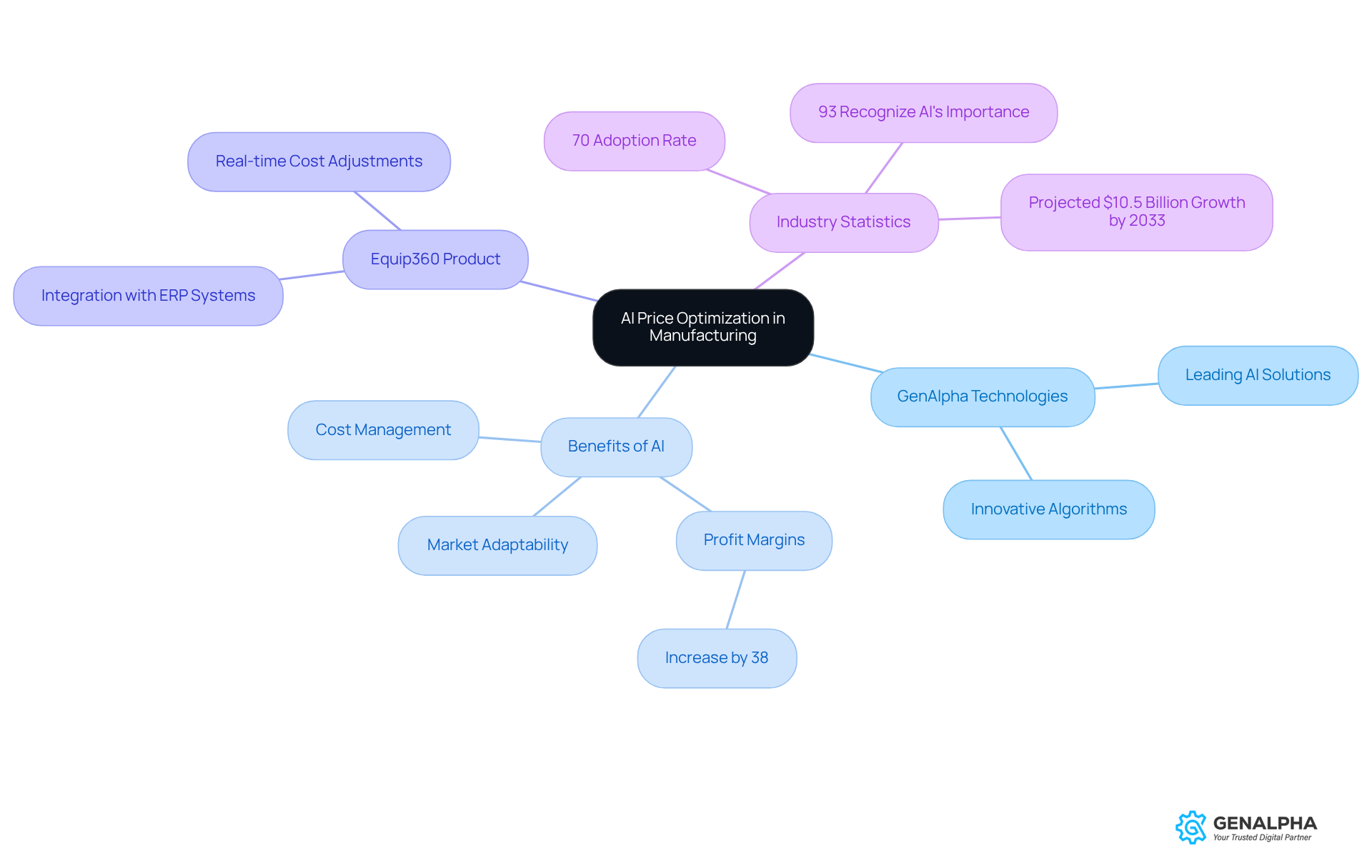
Analyze Customer Behavior: Tailor Pricing Strategies to Market Demands
To effectively enhance cost strategies, producers really need to take a deep dive into . Have you ever thought about how your purchasing habits change? It’s all about collecting and analyzing data on buying patterns, preferences, and how sensitive people are to price changes. By harnessing client segmentation and predictive analytics, businesses can tailor their cost strategies to fit what the market truly needs.
For example, H&M is employing AI price optimization to analyze consumer behavior and fine-tune its pricing strategies. This shows just how powerful data-informed insights can be when making cost decisions. If the analysis reveals that buyers are more price-sensitive during certain seasons, producers can proactively adjust their prices to capitalize on peak sales times.
According to the McKinsey State of Consumer Market Survey:
- 40% of consumers consider a producer's sustainability practices.
- This highlights the importance of aligning cost strategies with what consumers value.
- This customer-centric approach not only boosts sales but also builds long-term loyalty, as it shows that businesses are responsive to consumer needs and preferences.
Moreover, by incorporating insights from consumer behavior analysis, manufacturers can identify high-value segments. This enables them to develop targeted cost strategies utilizing AI price optimization that enhance profitability and customer satisfaction. So, what are you waiting for? Dive into your consumer data and start crafting strategies that resonate with your audience!
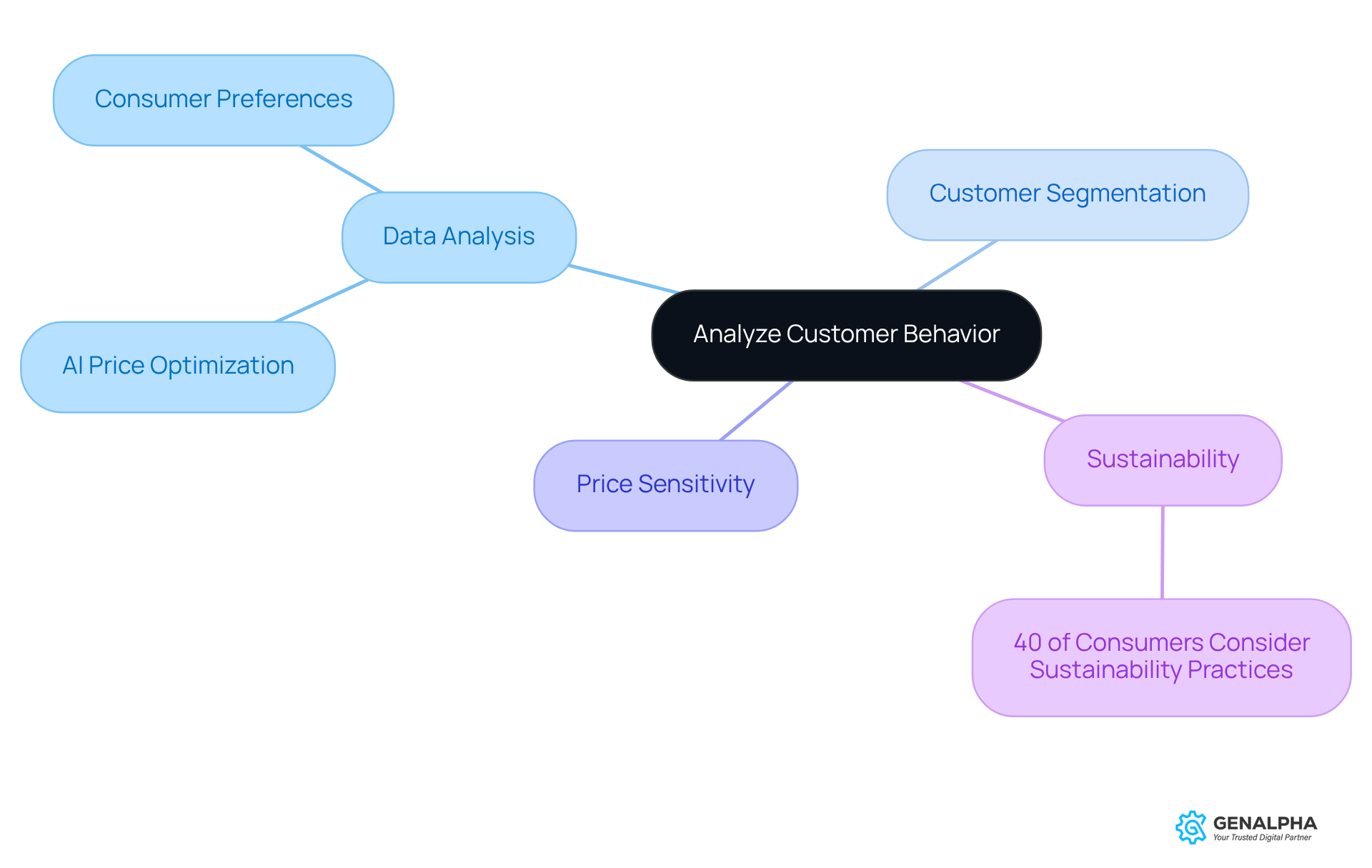
Utilize Data Analytics: Drive Pricing Decisions with Real-Time Insights
Harnessing data analytics is super important for AI price optimization when making smart pricing decisions in manufacturing. By tapping into real-time insights from various data sources—like sales history, market trends, and competitor pricing—manufacturers can leverage AI price optimization to find those sweet spots for pricing that not only maximize revenue but also appeal to customers. For example, if analytics show a spike in demand for a specific product, manufacturers can strategically raise prices to capitalize on this buzz. This proactive approach not only boosts profits but also helps them stay responsive to market changes.
Did you know that a study found 66% of supply chain companies believe using data analytics is crucial for their future operations? Businesses that effectively use data analysis in their pricing strategies often see a noticeable increase in sales effectiveness and customer satisfaction. By utilizing advanced analytics tools, such as AI price optimization, manufacturers can keep a close eye on their pricing algorithms, ensuring they remain competitive and aligned with what consumers want.
However, it’s important to consider challenges like potential customer backlash and the risks of price wars when using dynamic pricing methods. As Marcin Majka puts it, 'Dynamic adjustment is a method that allows companies to modify costs in real time depending on market demand, inventory levels, competitor actions, and consumer behavior.'
Incorporating real-time insights into pricing strategies is truly a game-changer. It empowers businesses to adjust quickly to shifting market conditions and evolving consumer behaviors. So, how is your business to stay ahead?
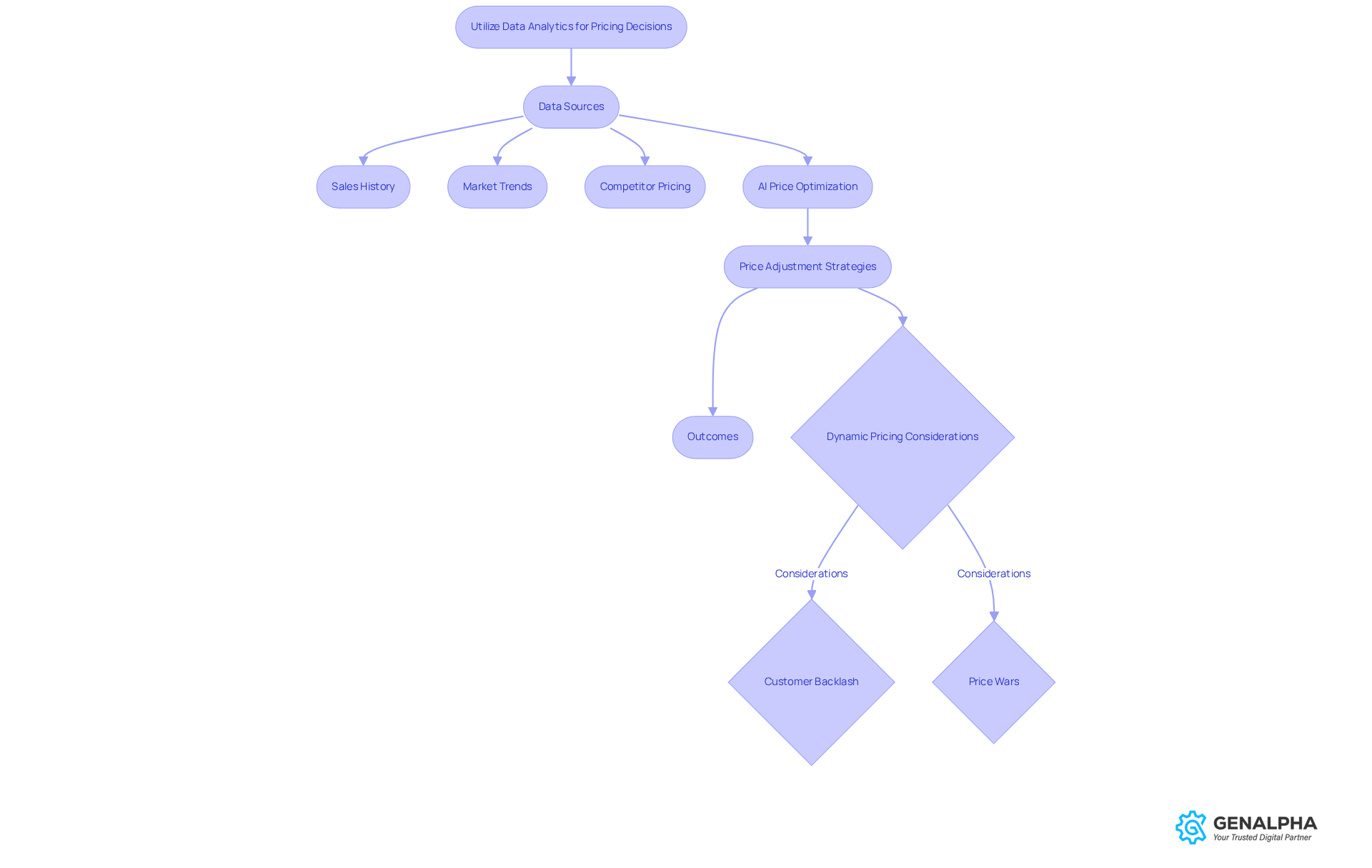
Conduct Competitive Analysis: Stay Ahead with Market Pricing Insights
If you're a producer looking to sharpen your cost strategies, AI price optimization through a thorough competitive evaluation is key! By taking a close look at what your competitors are doing—such as their pricing models, promotional tactics, and overall market positioning—you can identify gaps and opportunities that can significantly enhance your AI price optimization strategies.
For example, when a competitor drops their prices, you might consider applying discounts or enhancing your offerings with value-added services to keep your customers interested. This proactive approach not only helps you retain clients but also with AI price optimization.
And let's not forget the importance of keeping an eye on market trends and competitor actions to maintain that competitive edge. Just look at some successful case studies:
- One manufacturer snagged a whopping $2.4 million price effect in the first year by leveraging market research to create value-based costs.
- Another company saw a $125 million effect over three years by sticking to a consistent cost structure.
Additionally, using a structured competitive cost analysis process—like identifying both direct and indirect competitors—alongside AI price optimization can really elevate your strategic decision-making. Insights from a sales 'war room' that pinpointed $64 million in gross margin dollars underscore the value of ongoing competitive cost analysis. These insights highlight how a data-driven approach, particularly AI price optimization, can help you navigate the complexities of the manufacturing landscape.
Plus, ethical cost practices play a vital role in building long-term customer relationships. So, how are you planning to enhance your strategies today?
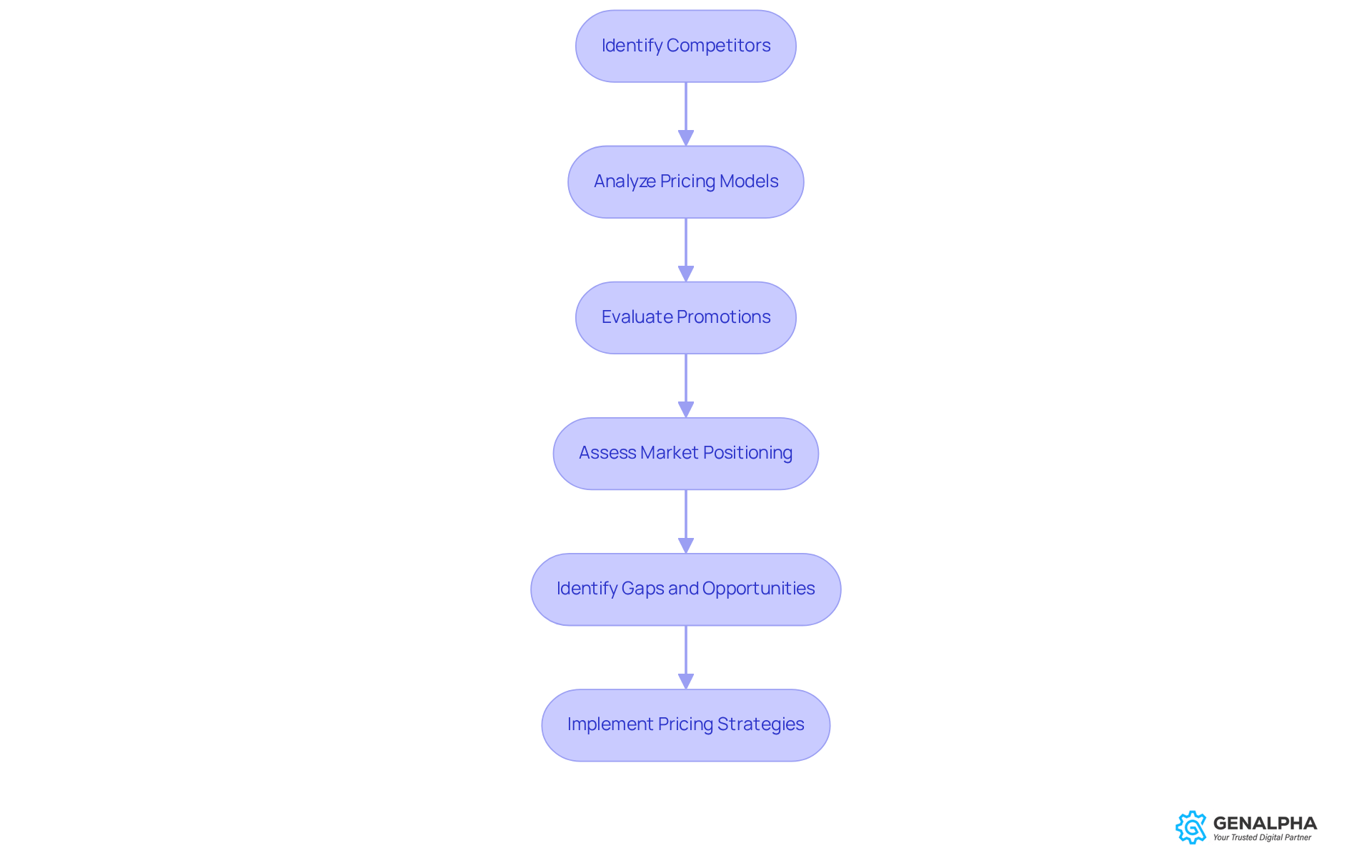
Implement Dynamic Pricing: Adapt to Market Changes Instantly
Have you ever noticed how quickly prices can change in the market? Applying flexible cost strategies with AI price optimization allows producers to adapt to these market shifts in real-time. Imagine utilizing AI price optimization to adjust prices based on demand fluctuations, competitor rates, and inventory levels—it's like having a responsive toolkit at your fingertips! For example, during peak demand times, producers can raise prices to optimize revenue. Conversely, in slower periods, offering discounts can encourage sales and keep the momentum going.
This flexible cost approach not only but also utilizes AI price optimization to ensure that producers remain competitive in a fast-paced market environment. Studies show that AI price optimization of dynamic costs can lead to an enhancement in revenue by 5-20%. A 2010 study highlighted this, showcasing how effective these strategies can be in driving financial performance. Take Amazon, for instance; their implementation of AI price optimization through real-time cost adjustments has led to a remarkable 25% increase in profits. It’s a clear demonstration of the possibilities when this strategy is applied effectively.
However, it’s crucial to consider the potential downsides. Fluctuations in pricing without clear justification can impact brand perception and lead to trust issues among customers. So, how can we navigate this? Integrating insights from successful case studies, like the San Francisco Giants' dynamic revenue model, can provide practical examples of effective implementation.
What do you think? Are flexible cost strategies the key to thriving in today’s market?
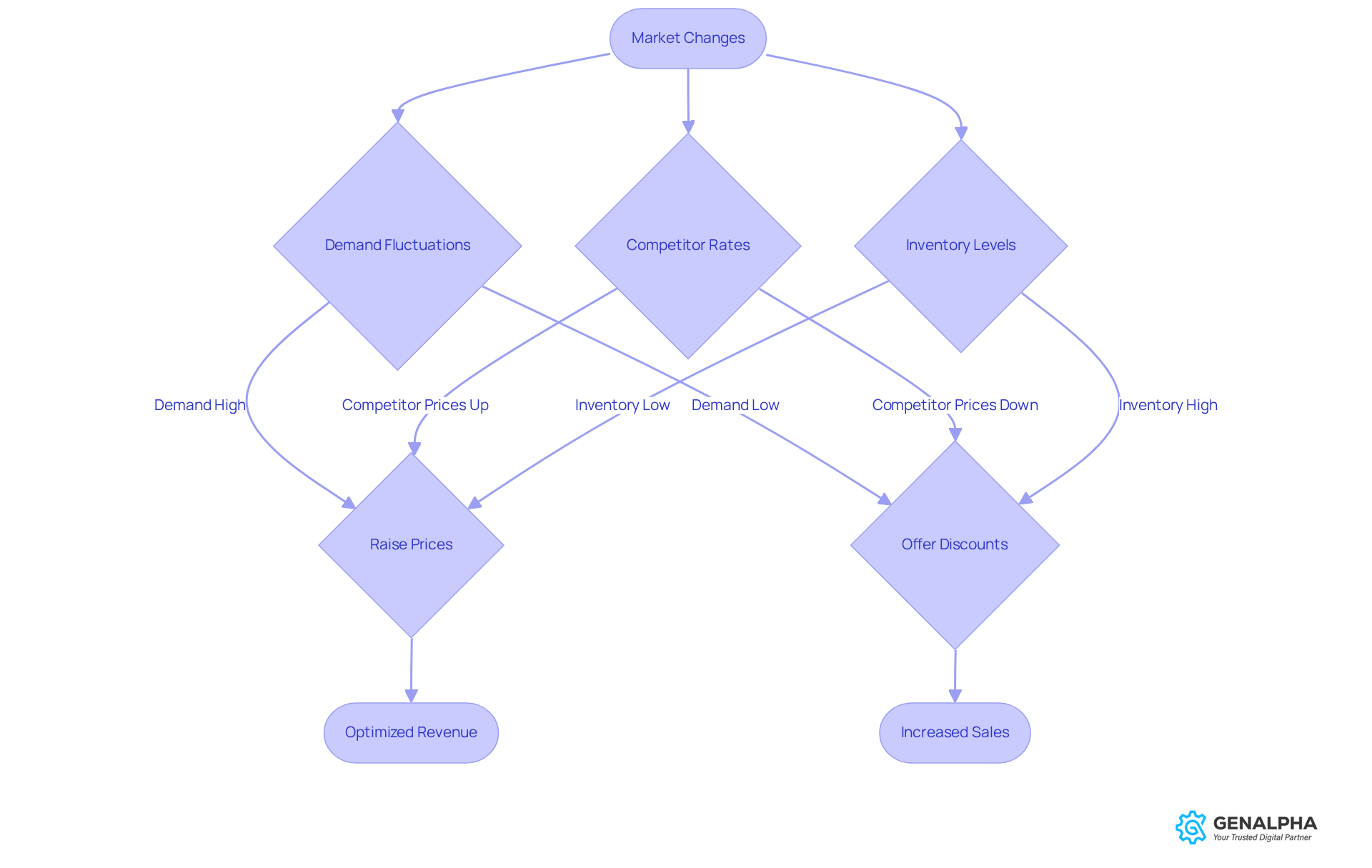
Test Pricing Strategies: Experiment and Optimize for Maximum Impact
Evaluating cost methods through A/B testing or pilot programs is crucial for enhancing value models in manufacturing. Have you ever wondered how AI price optimization can help producers discover the most effective techniques by testing different price levels, promotional deals, and bundling methods? For instance, when evaluating two different cost structures for a new product, manufacturers can assess customer reactions and sales performance, ultimately pinpointing the best approach. This iterative process of experimentation not only enhances financial strategies but also utilizes AI price optimization to maximize profitability.
Research shows that even a tiny 1% increase in costs can lead to profit growth exceeding 11%. That really underscores the significance of effective AI price optimization! As someone once said, "Cost has a significant psychological effect on how clients view your worth." This makes it essential to implement —like strategically pricing items at .99—to improve perceived value and influence consumer behavior.
So, how can producers start executing A/B testing? A great first step is to select a small portion of their clientele to trial various cost structures. This allows them to gather valuable insights and adjust their strategies accordingly. What do you think? It’s a simple yet effective way to enhance value and connect with your audience!
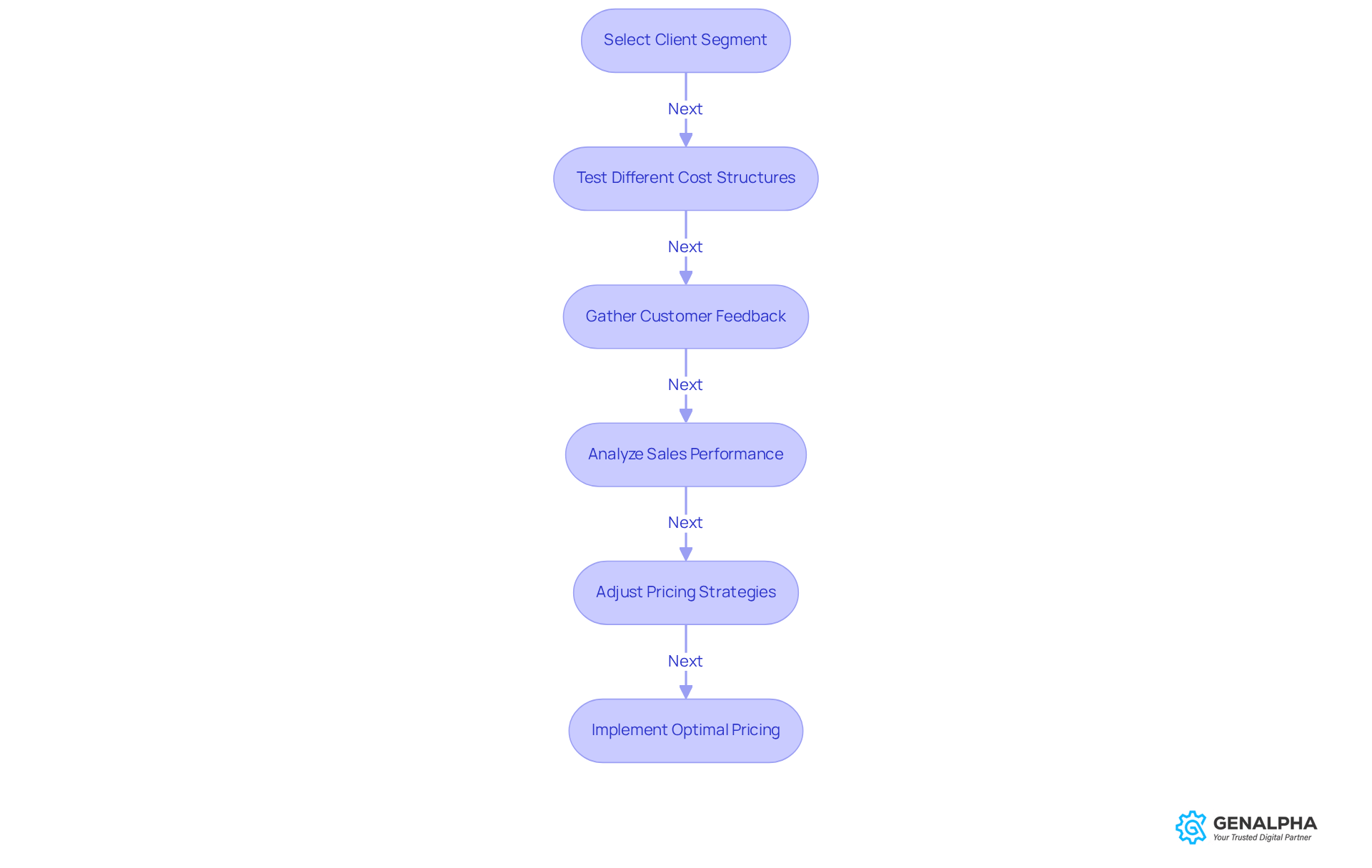
Educate Customers: Communicate Value Behind Pricing Adjustments
Effectively informing clients about cost changes is super important for keeping trust and satisfaction alive. When manufacturers decide to change prices, it’s crucial to clearly. Think about factors like rising production costs, improved product features, or shifts in market demand—these should be communicated transparently. This way, you not only reduce the chance of negative reactions but also reinforce how valuable your products are.
For instance, using informative newsletters or hosting webinars can be great ways to share the benefits of these cost changes. This ensures clients feel appreciated and well-informed. Did you know that almost 75% of clients prefer brands that recognize and cater to their unique needs? This highlights how important it is to tailor your communication strategies during price changes.
Moreover, sticking to a steady, values-driven pricing strategy can really boost client loyalty. In fact, 86% of purchasers are willing to pay a bit more for outstanding service. By focusing on clear communication, producers can build stronger connections with clients, even when price adjustments are necessary.
As Amy Williams points out, turning tough conversations into opportunities can enhance brand value and client trust. On the flip side, poor communication—like what happened with Netflix’s price hike—can lead to backlash and hurt your brand’s credibility. So, it’s essential for producers to navigate these discussions thoughtfully to keep customer loyalty intact.
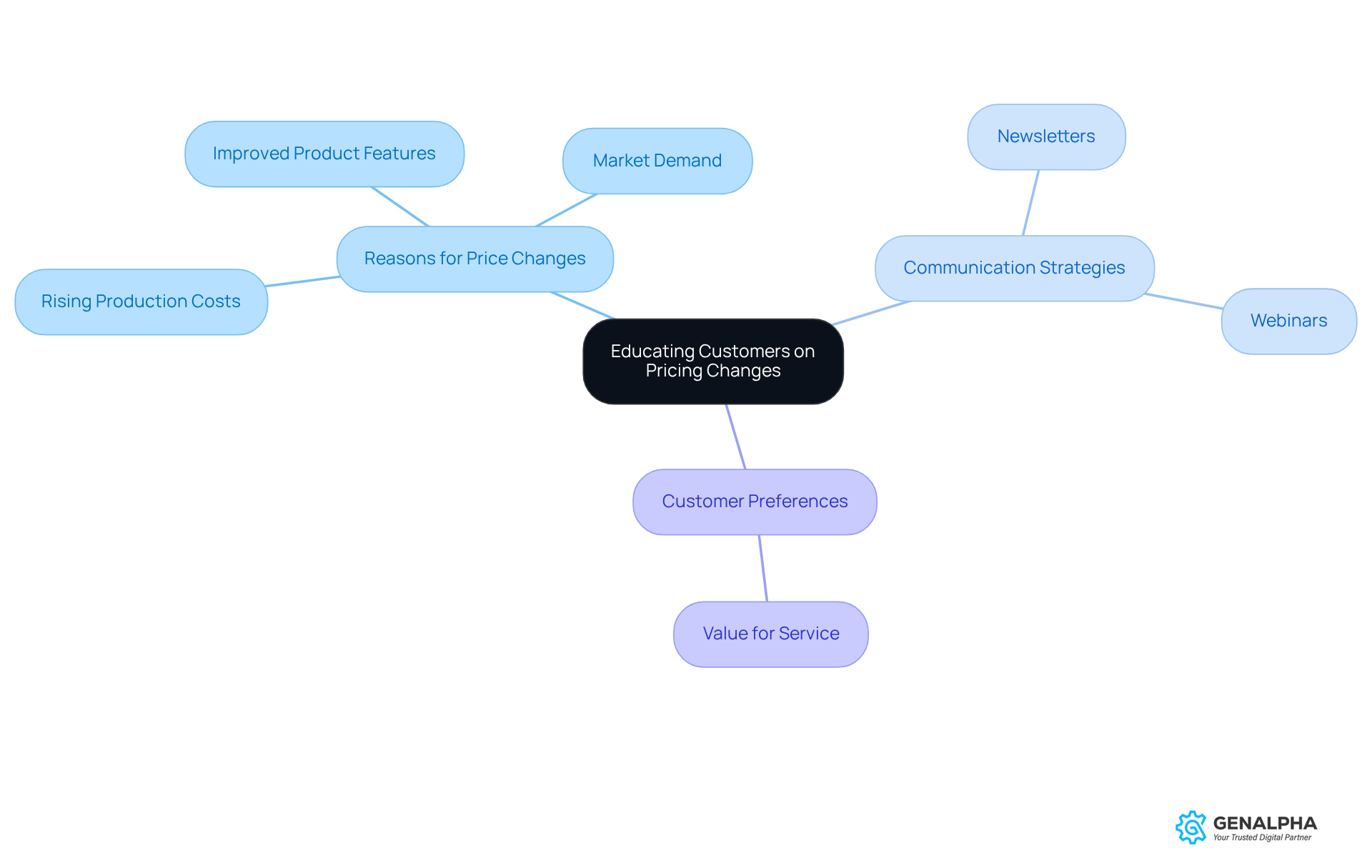
Foster Cross-Department Collaboration: Align Teams for Pricing Success
Have you ever thought about how crucial cross-departmental cooperation is for keeping manufacturing costs in check? By bringing together teams from sales, marketing, finance, and operations, manufacturers can craft strategies that truly align with the company's goals. Regular meetings and shared platforms do wonders for communication, ensuring that everyone is on the same page when it comes to cost changes and plans.
For example, involving sales teams in cost discussions can unlock valuable insights about customer feedback and market trends. This collaboration leads to that really resonate with customers. Did you know that companies with aligned sales and marketing teams are 67% better at closing deals? That statistic really drives home the importance of teamwork!
Plus, there’s a staggering $1 trillion lost each year due to misalignment between sales and marketing. That’s a hefty price tag for poor collaboration! Look at Caterpillar, for instance. They use machine learning to adjust prices based on raw material costs, showcasing how effective team alignment can boost profitability and responsiveness to the market.
So, by prioritizing cross-departmental collaboration, manufacturers can not only navigate market complexities but also enhance their cost strategies using ai price optimization. Isn’t it time we all embraced this approach?
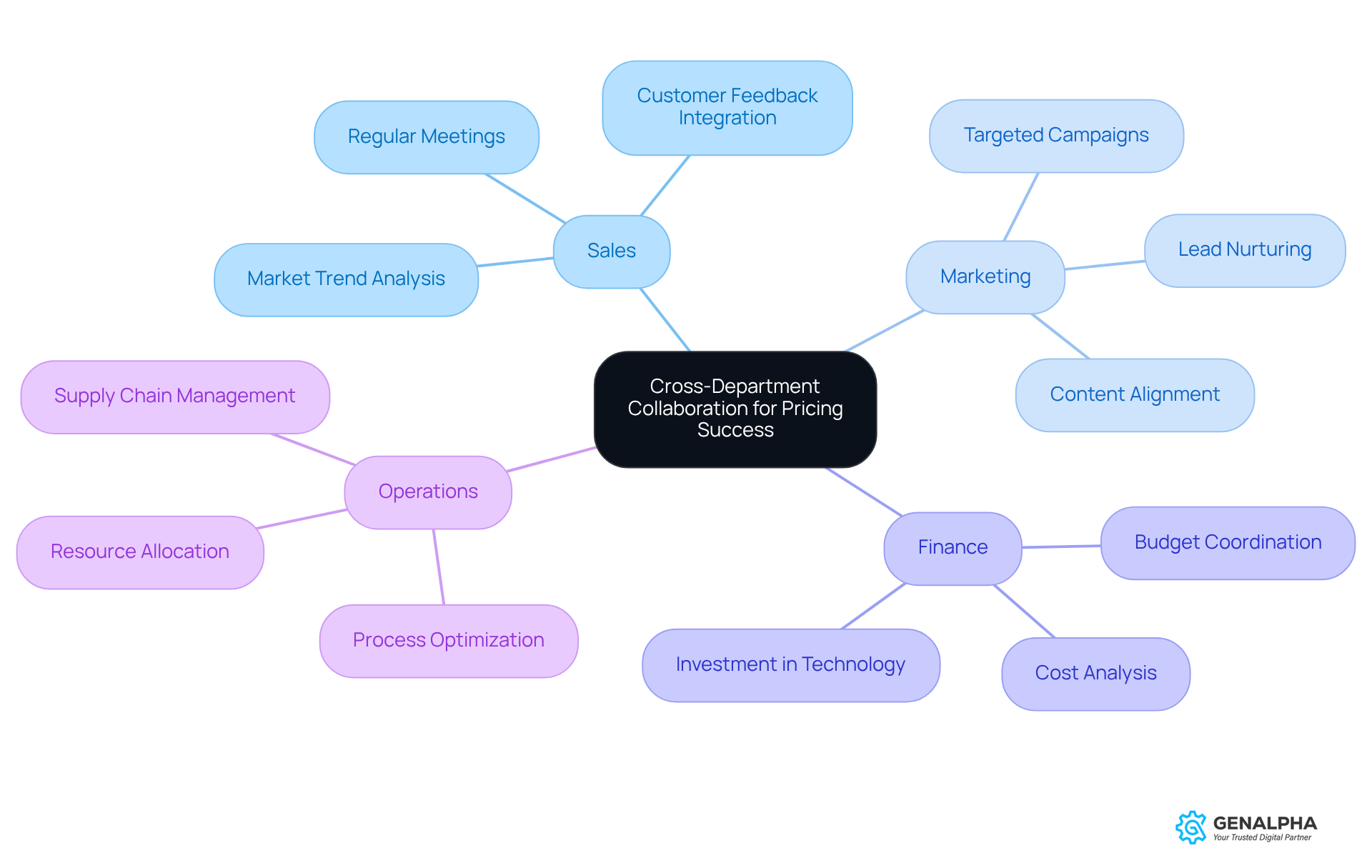
Monitor Performance Metrics: Evaluate and Adjust Pricing Effectiveness
Monitoring performance metrics is super important for figuring out how well cost strategies are working in manufacturing. Think about it: key performance indicators (KPIs) like sales volume, profit margins, and customer retention rates provide valuable insights into how ai price optimization influences overall business performance. For instance, did you know that a 1% improvement in costs can lead to an 11% increase in profits? That really highlights why making strategic adjustments is crucial.
As Katharine Paine points out, cost is the most critical element in maximizing revenue. By regularly checking these metrics, manufacturers can spot trends and make informed, data-driven tweaks to their cost strategies. W. Edwards Deming famously said, 'Without data, you’re just another person with an opinion.' This really drives home the when it comes to assessing financial strategies.
Now, if a particular product starts to see a sales drop after a price hike, that’s a clear sign it’s time to revisit the ai price optimization strategy. This proactive approach allows producers to explore other tactics that could boost sales and profitability, ultimately driving growth in a competitive marketplace. So, how often are you checking your performance metrics? It might just be the key to unlocking your business's potential!
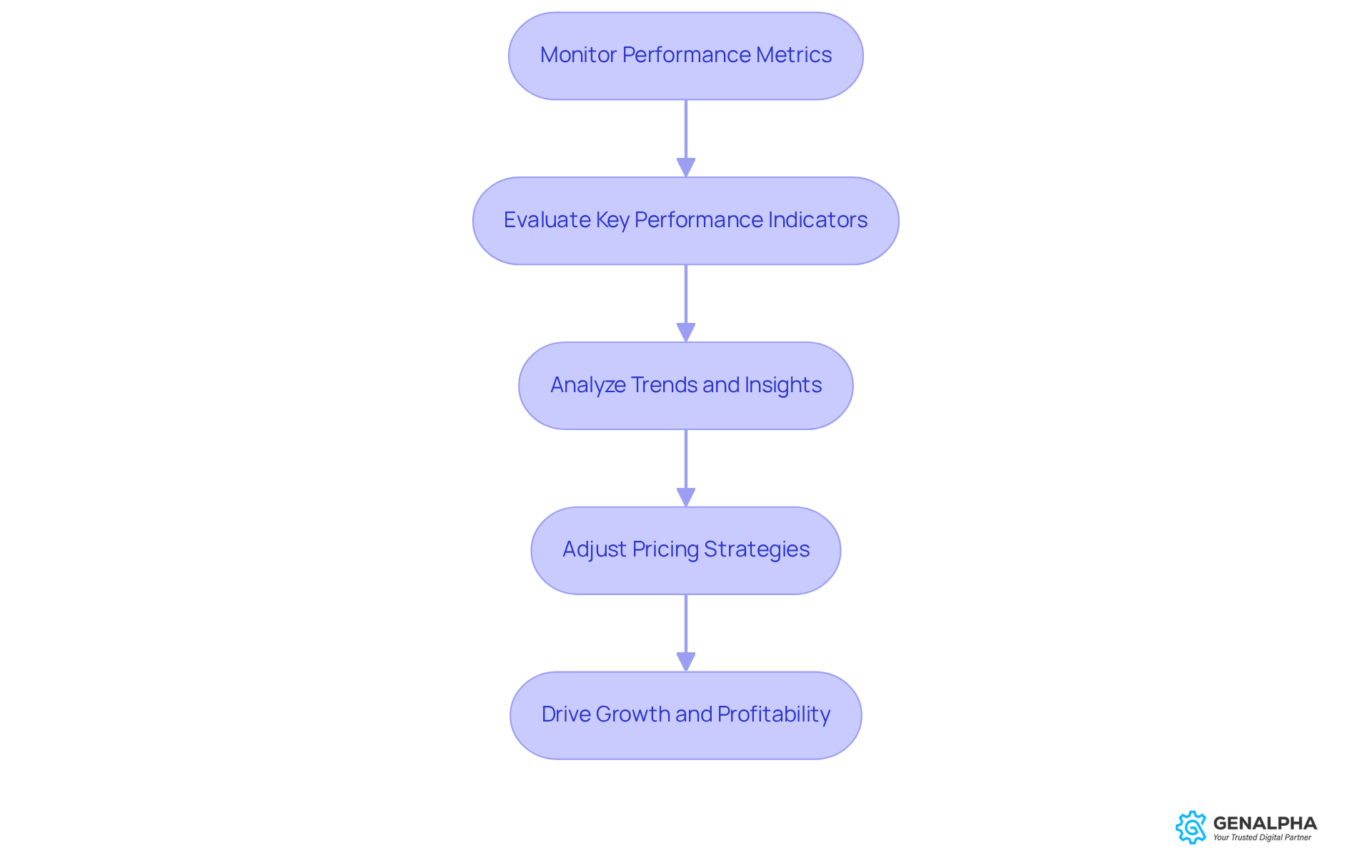
Embrace Continuous Improvement: Evolve Pricing Strategies for Long-Term Success
Creating a space for continuous improvement is key for producers wanting to tweak their cost strategies in response to the ever-shifting market landscape. As consumer tastes and competitive dynamics evolve, manufacturers must be proactive in adjusting their cost approaches. This means regularly assessing cost strategies, gathering feedback from clients, and keeping an eye on market trends.
For example, companies like Caterpillar have effectively modified their prices in response to changes in raw material costs, helping them maintain profit margins during unpredictable times. Similarly, Honeywell has embraced AI price optimization models to determine costs, which boosts both profitability and customer loyalty. This really highlights how is in managing costs.
By fostering a culture of innovation and adaptability, manufacturers can ensure their cost strategies not only stay relevant but also drive ongoing profitability and success in a competitive market. Plus, focusing on high-quality data and governance is essential for effective value determination. Just look at Siemens, which adjusts its prices based on regional demand.
In today’s landscape, embracing AI price optimization is essential for long-term success, not just a nice-to-have. So, how are you planning to adapt your cost strategies to stay ahead in this fast-paced environment?
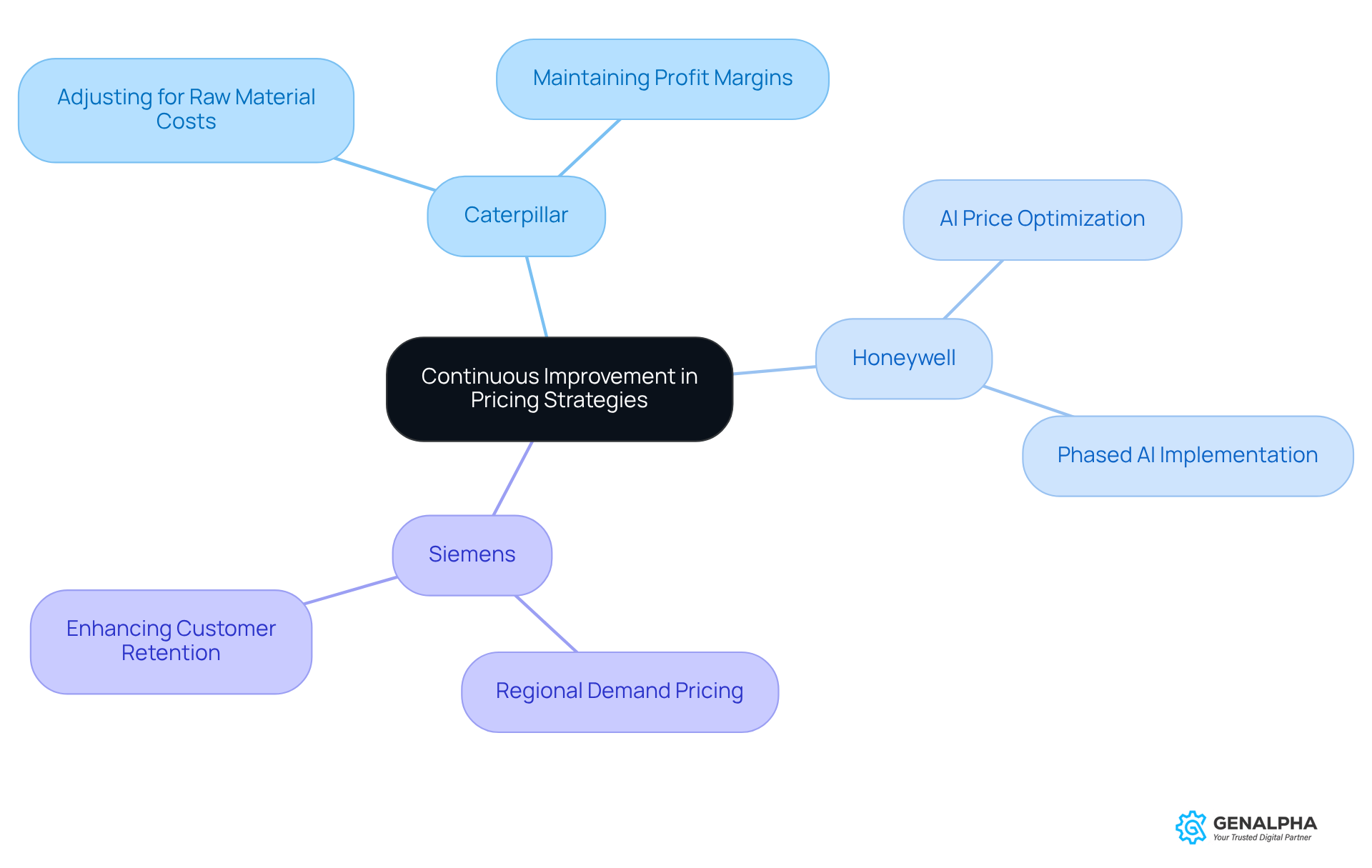
Conclusion
Embracing AI price optimization isn’t just a choice anymore; it’s a must for manufacturers who want to thrive in today’s competitive landscape. Think about it—by leveraging advanced algorithms and data analytics, producers can set prices that truly reflect market dynamics and consumer behaviors. Integrating AI tools not only boosts profitability but also builds customer loyalty through tailored pricing strategies.
So, what are the key insights here?
- Analyzing customer behavior is crucial.
- Dynamic pricing and competitive analyses—these strategies help businesses stay agile and responsive to market changes, which is vital for keeping that competitive edge.
- Fostering collaboration across departments and continuously monitoring performance metrics ensures that pricing strategies are effective and adaptable to evolving market conditions.
In conclusion, the journey toward successful AI price optimization in manufacturing is ongoing and requires a commitment to innovation and adaptability. By prioritizing data-driven insights and embracing a culture of continuous improvement, manufacturers can unlock significant growth potential. As the industry evolves, the time to act is now—let’s invest in AI-driven pricing strategies to secure a prosperous future in manufacturing. What are you waiting for?
Frequently Asked Questions
What is GenAlpha Technologies known for?
GenAlpha Technologies is known for leveraging AI for price optimization in the manufacturing sector, helping producers set prices that align with market trends and consumer behaviors.
How does Equip360 assist manufacturers?
Equip360 integrates with existing ERP systems to enable real-time cost adjustments, boosting profitability and enhancing customer satisfaction while allowing producers to adapt quickly to market shifts.
What percentage of producers plan to adopt AI solutions in the next five years?
Over 70% of producers plan to adopt AI solutions in the next five years.
How can AI price optimization impact profit margins?
Companies that embrace AI for price optimization can see profit margins soar by 38%, leading to significant gains in operational efficiency and revenue generation.
Why is analyzing customer behavior important for pricing strategies?
Analyzing customer behavior helps producers tailor their pricing strategies to fit market demands by understanding buying patterns and price sensitivity, which can enhance sales and build long-term loyalty.
Can you provide an example of a company using AI for pricing strategies?
H&M is using AI price optimization to analyze consumer behavior and adjust its pricing strategies accordingly, demonstrating the effectiveness of data-informed insights in pricing decisions.
What role does data analytics play in pricing decisions?
Data analytics provides real-time insights from various sources, allowing manufacturers to make informed pricing decisions that maximize revenue and respond to market changes.
What challenges might manufacturers face when using dynamic pricing methods?
Manufacturers may face challenges such as potential customer backlash and the risks of price wars when employing dynamic pricing strategies.
What is the significance of real-time insights in pricing strategies?
Real-time insights enable businesses to quickly adjust their pricing in response to shifting market conditions and evolving consumer behaviors, making it a crucial aspect of competitive pricing strategies.




